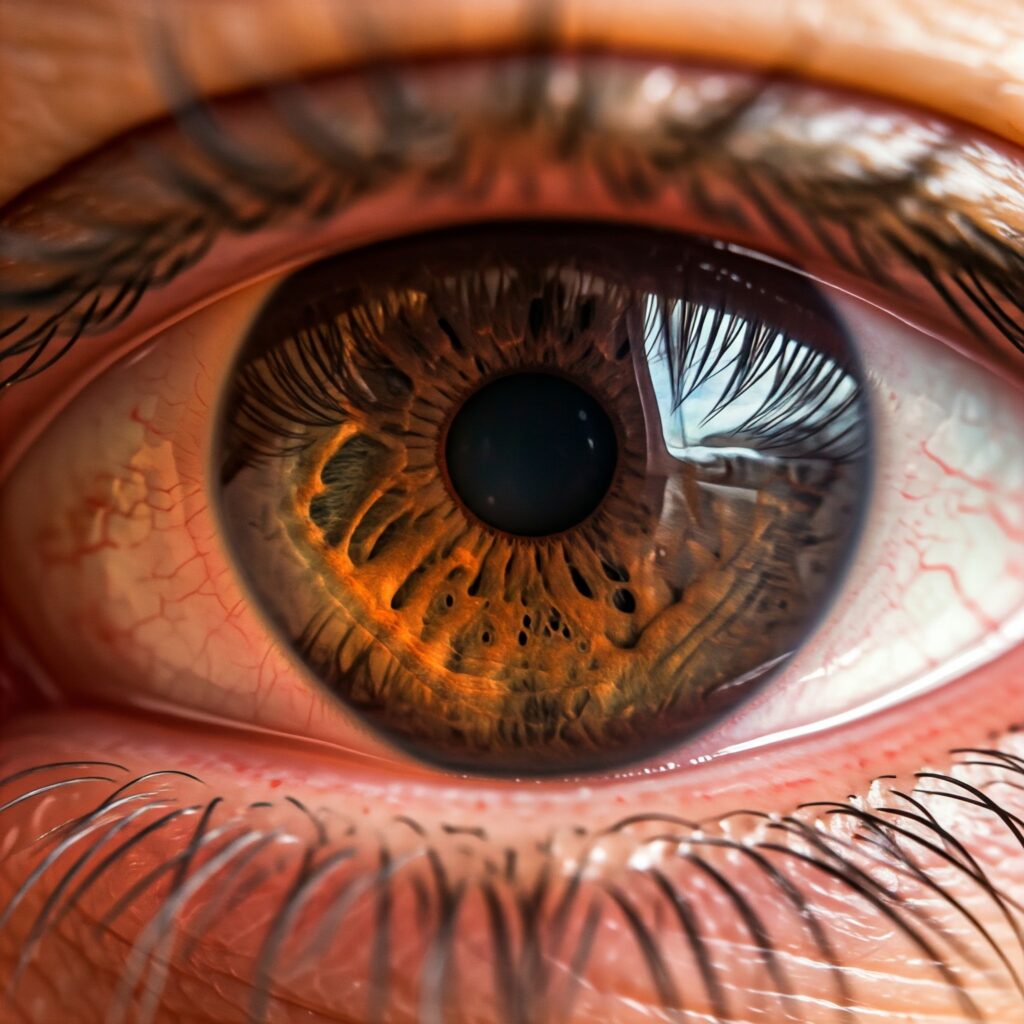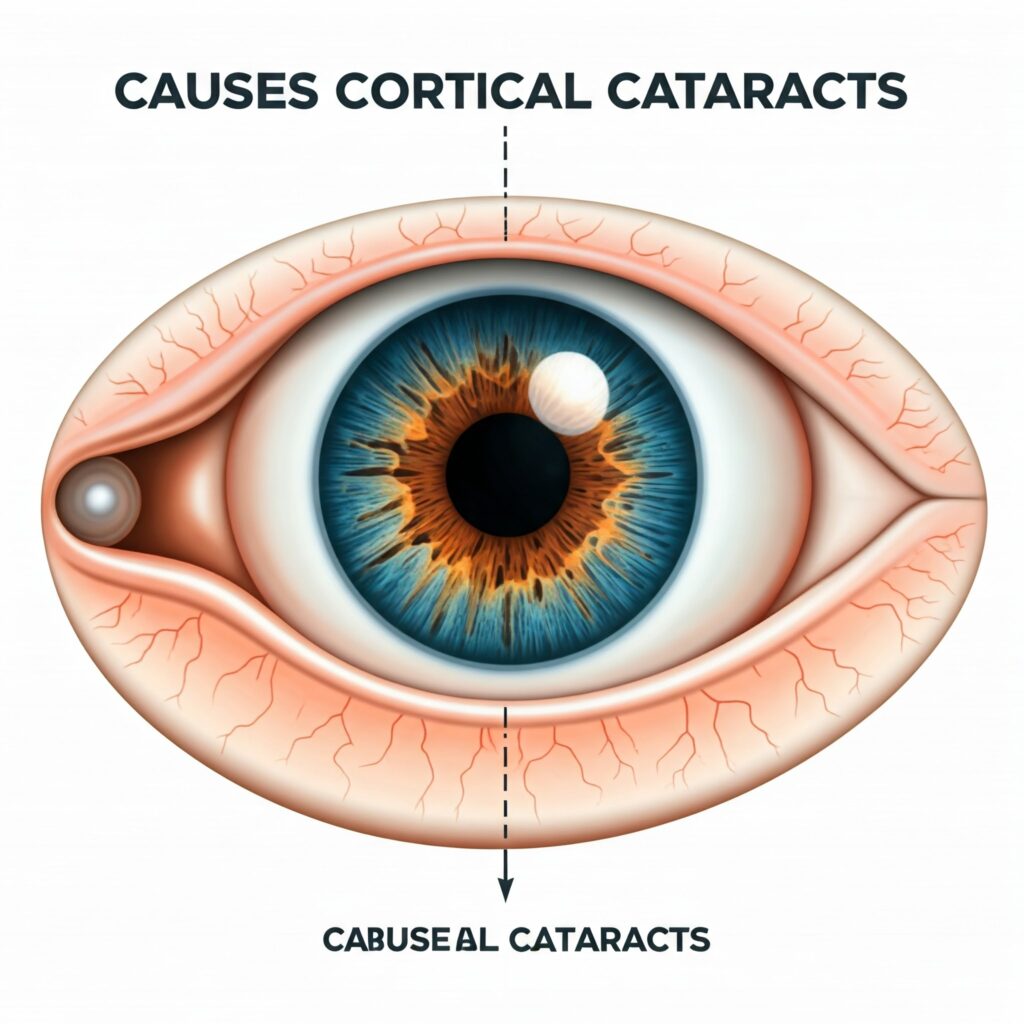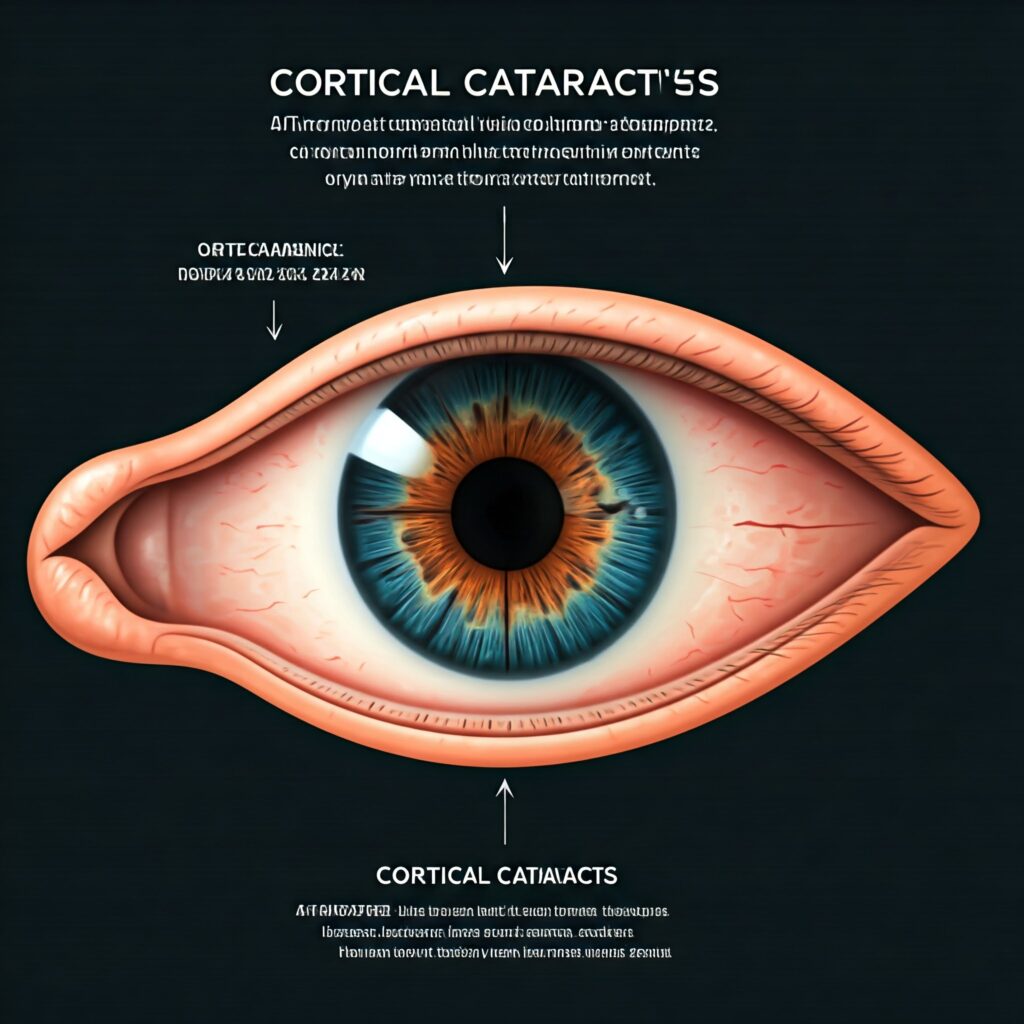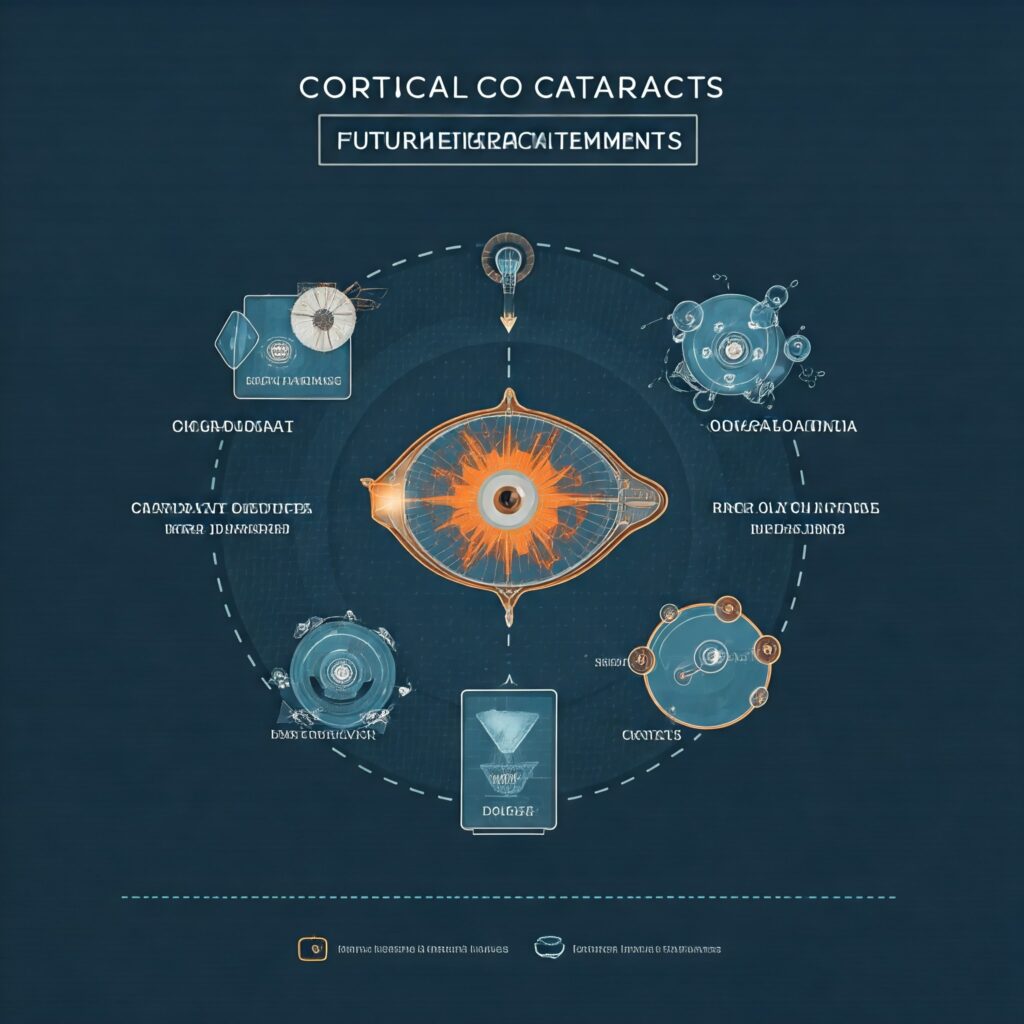Cortical Cataracts
Cortical cataracts are a type of age-related eye condition that primarily affects the lens of the eye. They develop in the outer edges of the lens, called the cortex, and progress inward toward the center. These cataracts are characterized by spoke-like opacities that can interfere with light reaching the retina, leading to blurred or distorted vision. While they are most common in older adults, other factors can contribute to their development.
Cortical cataracts refer to a specific type of cataract that forms in the lens’s outer edges and gradually moves inward. Unlike nuclear cataracts that form at the lens’s center, cortical cataracts often cause more noticeable visual distortions, especially in bright light or glare situations. These cataracts can significantly impact daily life if left untreated, making early diagnosis and management essential

Symptoms of Cortical Cataract
The symptoms of cortical cataracts can vary depending on the stage of development. Common signs include:
- Blurred or cloudy vision.
- Increased glare and difficulty seeing in bright light.
- Halos around lights, particularly at night.
- Decreased contrast sensitivity, making it harder to distinguish between similar colors.
Difficulty with peripheral vision as the cataract progresses inward
Causes and Risk Factor
Cortical cataracts are often associated with aging, but several other factors can contribute to their development:
- Aging: The natural aging process is the most common cause.
- UV Exposure: Prolonged exposure to ultraviolet light can damage the lens.
- Diabetes: High blood sugar levels can accelerate cataract formation.
- Smoking and Alcohol: Both habits increase oxidative stress on the eyes.
- Family History: A genetic predisposition can increase your risk.
- Eye Injuries: Trauma to the eye can sometimes lead to cortical cataracts.
Understanding these risk factors can help you take steps to delay or prevent their onset

Diagnosis of Cortical Cataract
- Diagnosing cortical cataract involves a comprehensive eye examination performed by an optometrist or ophthalmologist. The process typically includes:
- Visual Acuity Test: Measures how well you can see at different distances.
- Slit-Lamp Examination: A detailed look at the structures of your eye using a microscope and bright light.
- Dilated Eye Exam: Helps the doctor assess the lens and retina for signs of cataracts.
Early detection can significantly improve treatment outcomes, so regular eye check-ups are essential
Treatment Options for Cortical Cataract
The treatment for cortical cataract depends on their severity:
- Prescription Glasses or Contact Lenses: Mild cortical cataracts can sometimes be managed with updated prescriptions.
- Lifestyle Adjustments: Using anti-glare glasses and improving lighting can alleviate symptoms in early stages.
- Cataract Surgery: When the cataract significantly affects vision, surgery is the most effective treatment. The procedure involves removing the cloudy lens and replacing it with a clear artificial lens.
Advancements in cataract surgery, including laser-assisted techniques, have made this procedure highly successful and safe

Prevention of Cortical Cataract
While not all cases are preventable, certain steps can reduce the risk or delay the progression of cortical cataract:
- Protect Your Eyes: Wear sunglasses that block 100% of UV rays.
- Healthy Diet: Consume foods rich in antioxidants, like leafy greens and citrus fruits.
- Quit Smoking: Smoking increases the risk of cataract formation.
- Control Chronic Conditions: Properly manage conditions like diabetes and hypertension.
- Regular Eye Exams: Early detection of cataracts or other eye conditions can make treatment more effective.
By adopting these habits, you can maintain healthier eyes for longer
Living with Cortical Cataract
Living with cortical cataract can be challenging, but there are ways to adapt:
- Vision Aids: Use magnifying lenses or reading lights to make daily tasks easier.
- Limit Night Driving: Glare from headlights can be problematic for individuals with cortical cataracts.
- Regular Monitoring: Visit your eye care provider regularly to track the progression of the cataracts.
Making small adjustments in your lifestyle can help you maintain independence and quality of life while managing cortical cataracts
Advances in Cortical Cataract Research
Ongoing research into cortical cataract offers hope for improved treatments and prevention strategies:
- Non-Surgical Treatments: Scientists are exploring eye drops containing lanosterol, which may dissolve cataracts in the early stages.
- Advanced Surgical Techniques: Innovations like femtosecond laser surgery are making cataract removal even safer and more precise.
- Gene Therapy: Early studies suggest that genetic treatments could slow or prevent cataract formation in the future.
As research continues, the outlook for those affected by cortical cataracts is becoming increasingly optimistic.

